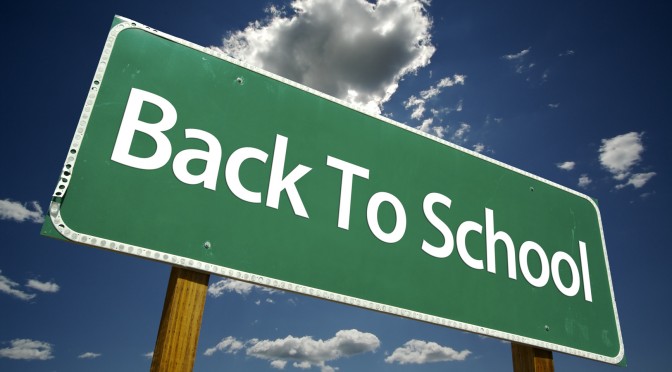Like a crisp morning in the late summer, back to school creeps up on us every year. Suddenly, from kindergarten to college, tearful parents hover like helicopters just a bit reticent to let their children go.
This year it is projected that American parents with kids in kindergarten through 12th grade will spend $24.9 billion, an average of about $630 per family and a 6% drop from the prior year. Years ago, back to school shopping consisted of clothes, shoes, school supplies and backpacks. In recent years, electronics have added to the expense list of supplies needed. Though not all parents buy electronics for their school-age child, the 57% who do, spend an average of $400 per family on clothing and electronics combined.
Let’s unpack the “going back to school” phenomenon. With a few tips to make it a little easier and more efficient, you’ll be taking it in stride!
Rekindling “school” habits.
Even though a child may enjoy school, the anticipation of summer days turning into a schedule-driven school week can bring a certain amount of anxiety exemplified by nightmares, changes in eating habits or mood swings. Aside from respecting the child’s feelings and letting them vent, parents can be proactive by changing the summer routine. Phasing in earlier bed and wake up times, getting excited about school shopping and reconnecting with school friends can help with the summer-to-school transition. Familiarize the child with bus or walking routes and the school grounds. If summer homework has not been assigned, now it the time to implement 2 or 3 practice sessions a week, perhaps some math games, a favorite reading time or some fun art projects.
Useful electronics that make sense.
A graphing calculator is a type of scientific calculator that is capable of plotting graphs. Graphing calculators also solve simultaneous equations and are programmable.
Digital e-readers are easy on the eyes especially for reading outdoors. In addition, an e-reader can hold more books than a grade school student can fit in a school bag. An electronic tablet has all the qualities of a great educational gadget. It is portable, powerful, and easy to use. Tablets hold hundreds of books, but their best features are apps. Educational apps include interactive books, dictionaries, calculators, and even games.
While tablets may suffice to complete writing assignments for elementary school students, they may not be sufficient in higher grades. As grade schoolers tackle longer essays, they require a computer to research and write their papers. Kids in elementary school can make do with family desktop computers or parents’ laptops, but middle school students may need their own computers.
In the higher grades, longer essays are required making printers an appropriate back-to-school electronics, especially those in middle school. While a basic printer model is sufficient, it is best to get a printer than can also scan and photocopy documents.
Digital Tools for Organizing Back to School Clutter (keeping everyone organized)
Keeping track and organizing forms and paperwork for the school age child can be a challenge for parents. The following digital tools are handy aids for keeping paper work, permission slips, schedules, projects, appointments and photos organized and under control.
Evernote – An app that helps the family remember everything and share it with others on multiple devices, even teachers!
Microsoft OneNote – Software that allows the family to collect, save and share information.
Google Calendar – Here is a master calendar that works on smartphones, tablets, or computers and syncs with others’ schedules.
Dropbox – A cloud service that stores photos and files in the cloud….great for storing and sharing.
Google Drive (formerly Google Docs) – allows users to store files in the cloud, share files, and edit documents, spreadsheets, and presentations with collaborators. This solves the problem of homework being forgotten at Dad’s house or eaten by the dog!
Whatever the age, going back to school is a necessary transition that has its ups and downs. The most important thing to remember is that, as parents, consistency, high expectations, listening and guidance are necessary qualities that will produce a successful transition. Remember….behind the child stands the teacher and behind the school stands the home.

